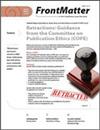Are Shrubs a Necessary Component of the Habitat for Ammospermophilus nelsoni in the San Joaquin Desert?
IF 0.5
4区 环境科学与生态学
Q4 BIODIVERSITY CONSERVATION
引用次数: 0
Abstract
Abstract. The San Joaquin antelope squirrel (Ammospermophilus nelsoni; SJAS) is a state-listed Threatened species in California that evolved in the shrublands of the San Joaquin Desert. Due to livestock overgrazing and fires, much of the desert has lost its shrub cover, which would be a conservation concern if shrubs are a necessary component of the habitat for squirrels. We established two 64-trap plots on the Lokern area of Kern County, California: one covered by saltbush scrub (Atriplex spp.) and another nearby without shrubs. We trapped quarterly starting in January 2019 and ending in November 2021 (12 trap sessions). When a squirrel was found in a trap, we permanently marked it with a passive integrated transponder (PIT) tag, recorded its trap location on the plot, and assessed its sex, weight (using a spring scale), age (young or adult), and reproductive condition. In the 3 years of trapping, we marked 90 SJAS on the shrub plot and 194 on the shrubless plot. On both plots, numbers of squirrels trended upward for the 3 years, with significantly higher numbers of SJAS on the shrubless plot in 2021. Survivorship did not differ significantly between plots, but we recorded more young squirrels on the shrubless plot. Although our plots were not replicated, our results and those of recent other studies show that shrubs are not a necessary component of the habitat for SJAS. Resumen. La ardilla antílope de San Joaquín (Ammospermophilus nelsoni; SJAS) es una especie que evolucionó en los matorrales del desierto de San Joaquín y que actualmente figura en la lista estatal de especies amenazadas de California. Debido al sobrepastoreo del ganado y a los incendios, gran parte del desierto ha perdido su cubierta arbustiva, lo que podría suponer un problema de conservación debido a que los arbustos son un componente necesario del hábitat de las ardillas. En este estudio, establecimos dos parcelas con 64 trampas en el área de Lokern en el condado de Kern, California: una cubierta por arbustos saltbush (Atriplex spp.) y otra cercana sin arbustos. Realizamos trampeos trimestrales que comenzaron en enero de 2019 y finalizaron en noviembre de 2021 (12 sesiones de trampeo). Cuando se encontró una ardilla en una trampa, la marcamos permanentemente con una etiqueta de transpondedor integrado pasivo (PIT), registrábamos la ubicación de la trampa en la que cayó, su sexo, peso (usando una báscula de resorte), edad (joven o adulta) y condición reproductiva. Durante los tres años de trampeo, marcamos 90 SJAS en la parcela con arbustos y 194 en la parcela sin arbustos. En ambas parcelas, la cantidad de ardillas tendió a incrementar durante los tres años, con un número significativamente mayor de SJAS en la parcela sin arbustos en 2021. La supervivencia no difirió significativamente entre parcelas, pero registramos más ardillas jóvenes en la parcela sin arbustos. Aunque nuestras parcelas no fueron replicadas, nuestros resultados y los de otros estudios recientes muestran que los arbustos no son un componente necesario del hábitat de las SJAS.灌木是圣华金沙漠中尼尔森尼蚜虫(Ammospermophilus nelsoni)栖息地的必要组成部分吗?
摘要。圣华金羚羊松鼠(Ammospermophilus nelsoni; SJAS)是加利福尼亚州列入国家清单的濒危物种,在圣华金沙漠的灌木丛中进化。由于牲畜过度放牧和火灾,大部分沙漠的灌木植被已经消失,如果灌木是松鼠栖息地的必要组成部分,这将是一个保护问题。我们在加利福尼亚州克恩县的洛肯地区建立了两个 64 个诱捕器的地块:一个被盐灌木丛(Atriplex spp.)覆盖,另一个附近没有灌木。我们从 2019 年 1 月开始每季度诱捕一次,到 2021 年 11 月结束(12 次诱捕)。当在诱捕器中发现松鼠时,我们会用被动式集成应答器 (PIT) 标签对其进行永久标记,在小区上记录其诱捕位置,并评估其性别、体重(使用弹簧秤)、年龄(幼年或成年)和繁殖状况。在 3 年的诱捕过程中,我们在灌木地块上标记了 90 只 SJAS,在无灌木地块上标记了 194 只。在这三年中,两个地块上的松鼠数量都呈上升趋势,其中 2021 年无灌木地块上的 SJAS 数量明显较高。存活率在不同地块上没有明显差异,但我们在无灌木地块上记录到了更多的小松鼠。虽然我们的地块没有重复,但我们的结果和最近其他研究的结果都表明,灌木并不是褐马鸡栖息地的必要组成部分。总结。圣华金羚羊松鼠(Ammospermophilus nelsoni; SJAS)是一种在圣华金沙漠灌木林中进化的物种,目前已被列入加利福尼亚州濒危物种名单。由于牲畜过度放牧和火灾,沙漠中的大部分灌木植被已经消失,这可能会带来保护问题,因为灌木是松鼠栖息地的必要组成部分。在这项研究中,我们在加利福尼亚州克恩县的洛肯地区建立了两个 64 个诱捕点:一个被盐灌木(Atriplex spp.)覆盖,另一个附近没有灌木。我们每季度进行一次诱捕,从 2019 年 1 月开始,到 2021 年 11 月结束(12 次诱捕)。当在诱捕器中发现松鼠时,我们会用被动集成应答器(PIT)标签对其进行永久标记,并记录其落入诱捕器的位置、性别、体重(使用弹簧秤)、年龄(幼年或成年)和繁殖状况。在三年的诱捕过程中,我们在有灌木的地块标记了 90 只松鼠,在没有灌木的地块标记了 194 只。在这三年中,两个小区的松鼠数量都呈上升趋势,2021 年,无灌木小区的松鼠数量明显增加。不同地块的存活率没有明显差异,但我们在无灌木地块记录到了更多的小松鼠。虽然我们的地块没有重复,但我们的结果和其他近期研究的结果都表明,灌木并不是褐马鸡栖息地的必要组成部分。
本文章由计算机程序翻译,如有差异,请以英文原文为准。
求助全文
约1分钟内获得全文
求助全文
来源期刊

Western North American Naturalist
环境科学-生态学
CiteScore
0.90
自引率
16.70%
发文量
39
审稿时长
>36 weeks
期刊介绍:
The Western North American Naturalist places neither restriction nor preference on manuscripts within the disciplines of the biological sciences. Each issue treats diverse taxa from the perspectives of various disciplines (e.g., ecology, population dynamics, behavior, systematics, anatomy, and physiology).
 求助内容:
求助内容: 应助结果提醒方式:
应助结果提醒方式:


